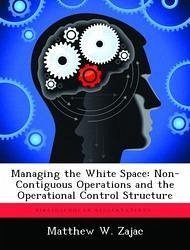This monograph examines the problem created for control when changes occur to the operational capabilities that enable non-contiguous operations. The problem exists because an operational control structure optimized for non-contiguous operations possesses an inherent control gap since a tactical control node capable of executing tasks in the battlespace retained by the operational command does not exist. The operational control structures in both Operation Enduring Freedom and Operation Iraqi Freedom faced this challenge. The control problem is examined by investigating how changes in operational capabilities force the operational command to change the methods by which it achieves its doctrinal tasks. Changing its methods creates tactical requirements to overcome the terrain in the previously unused, or "white "", space between subordinate units. A doctrinally ineffective control structure results when the operational control structure attempts to execute these new tactical tasks without changing its structure. Thus, changing capabilities during non-contiguous operations may indicate that the operational control structure should be adjusted. This monograph recommends that operational planners conducting non-contiguous operations integrate the concept of an operational control structure transition point into their campaign plan and base the transition criteria upon changes to the capabilities that enable the conduct of operational tasks during non-contiguous operations
Bitte wählen Sie Ihr Anliegen aus.
Rechnungen
Retourenschein anfordern
Bestellstatus
Storno









